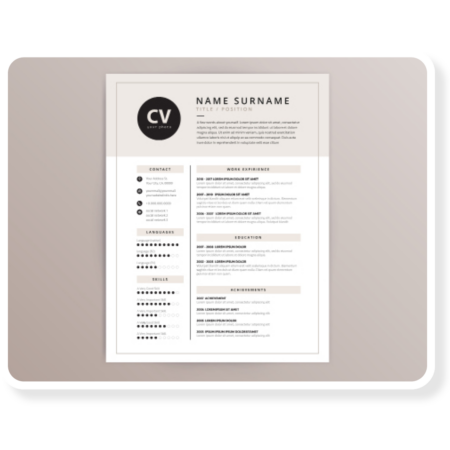Learning objectives
This lesson plan gives students the skills to:
- Identify and research fictional characters and events
- Communicate effectively for the type of document
- Use digital tools to display content effectively and construct knowledge
- Identify and create a strong, demonstrative CV showing accurate desirable attributes
Steps
Choose a fictional character to research. This could include characters from novels, films, music, art, or mythology, depending on the course topic and relevancy.
Then research the fictional character using online resources and classwork. Make notes about important facts, like their skills, important life milestones, and how they helped shape their world.
You must learn what information is included in a CV. Research CV best practise and find tutorials for creating a professional CV. Take notes on common features seen and how best to display information.
Once you have found relevant information about your character and understand how best to present it, you need to apply the information you’ve learned and write the CV. You must include a wide range of information in the CV, depending on the figure you’ve selected:
- Education and work experience
- Direct quotes
- Personality traits and skills
- Life experiences
Your CV should be written in first person, and you should aim for short, concise sections of information. A CV is a document to highlight and promote the skills and experience of a person, used to show potential employers their strengths in order to be employed, so make sure this purpose is reflected in your work.
Determine the layout of information and what graphic elements to include on the page. Consider the feel of the document, and ensure that use of colours, fonts, and graphics reflect the type of person your character is. Important things to consider:
Fonts, colours, and graphical elements should reflect the person. Stick to two cohesive colours and two contrasting fonts, like a serif and sans-serif, and use white space to keep the design consistent, clean, and easy to digest
Think about hierarchical elements like headers, bullet points, and call-out boxes. Consider alignment, proximity, and proportion for the user experience
Include relevant elements such as headshots and quotes
Why not create your own font or character with Adobe Firefly?
You can create custom fonts and generate character images with Adobe Firefly. Watch the video to find out more.
Open Adobe Express and begin your design. As you work, consider how design will impact the way people digest the information on page. If you need inspiration, here is a student example. To find out more about how to use Adobe Express, watch our video guide here.
Once you have completed your research, content creation, and design, and you have read through and are happy with the design, submit to your teacher to mark or to a peer to review. Find information on you will be evaluated in the rubric.








Rubric
Explanation | Student states clearly all essential information of a CV, and the information is delivered in a way that shows full, critical understanding of the character |
Execution | The student demonstrated full, detailed attention to the successful execution of CV creation including organisation, visual and text content, formatting, and stylistic choices. |
Design | The student used a breadth of graphic design principals to communicate messaging effectively. |
Adobe Express | The student used Adobe Express efficiently, resulting in a comprehensive final document. |
